History of Endangered Cat Breeds: A Powerful Story
Quick Summary: Several cat breeds face endangerment due to factors like habitat loss, genetic bottlenecks, and low population numbers. Breeds such as the Scottish Wildcat, Iberian Lynx, and Sokoke are critically endangered, requiring conservation efforts to preserve their unique genetic heritage and prevent extinction. Understanding their history and challenges is crucial for supporting their survival.
Have you ever wondered if some of our beloved cat breeds might disappear forever? It’s a sobering thought, but the reality is that several unique and fascinating cat breeds are facing the threat of endangerment. These aren’t just any cats; they’re the result of centuries of natural selection and, in some cases, careful breeding. Their potential loss would mean losing a piece of our natural and cultural heritage. Let’s explore the history of these endangered breeds and what we can do to help.
Why Are Some Cat Breeds Endangered?
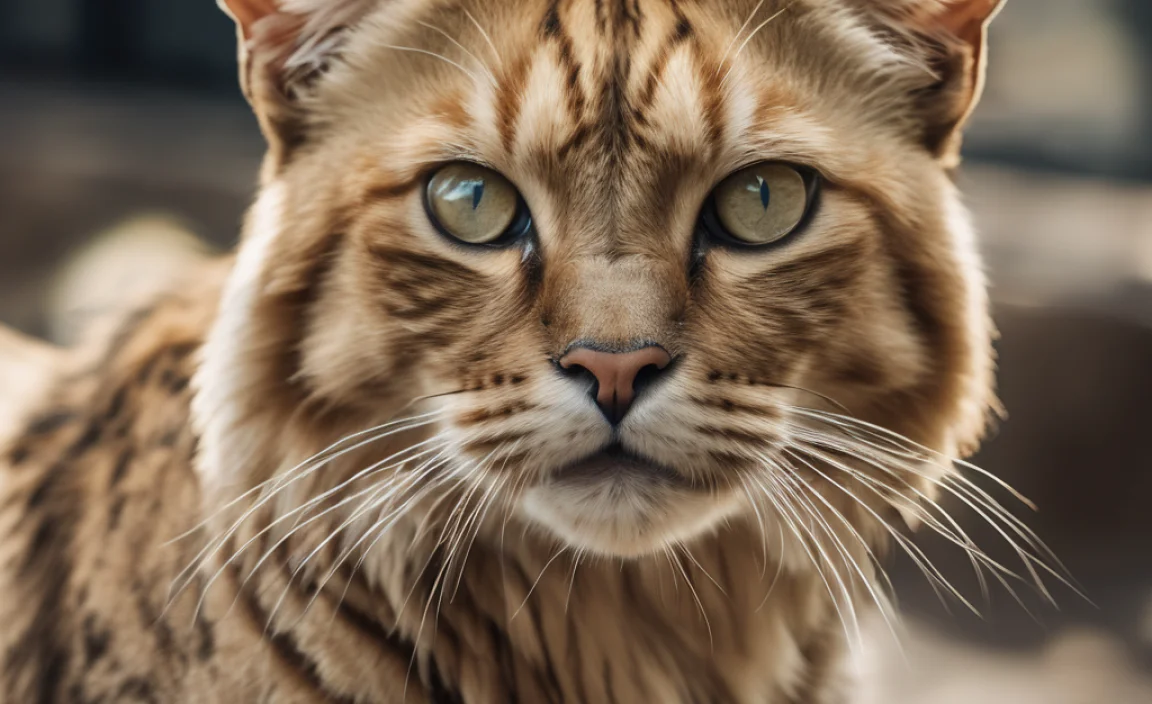
Many factors contribute to the endangerment of cat breeds. Understanding these reasons helps us appreciate the urgency of conservation efforts.
Habitat Loss
Habitat loss is one of the primary drivers of endangerment for many wild cat species. As human populations grow and land is developed for agriculture, housing, and industry, the natural habitats of these cats shrink. This fragmentation of habitats isolates populations, reducing their ability to find mates and resources.
Genetic Bottlenecks
Genetic bottlenecks occur when a population experiences a sharp decline in numbers, leading to a loss of genetic diversity. This can happen due to disease outbreaks, natural disasters, or human activities. When the population rebounds, it does so with a reduced gene pool, making the cats more susceptible to diseases and less adaptable to environmental changes. According to a study by the National Center for Biotechnology Information (NCBI), genetic diversity is crucial for the long-term survival of any species.
Hybridization
Hybridization, or interbreeding with other species or breeds, can also threaten the genetic integrity of a purebred cat. While crossbreeding can sometimes be beneficial, it can also dilute the unique genetic traits that define a particular breed, leading to its eventual disappearance. This is a significant concern for breeds like the Scottish Wildcat, which readily interbreeds with domestic cats.
Low Population Numbers
Simply having a small population size can put a breed at risk. Small populations are more vulnerable to random events, such as a disease outbreak or a natural disaster, which can wipe out a significant portion of the population. Additionally, small populations often suffer from inbreeding, which can lead to health problems and reduced fertility.
Critically Endangered Cat Breeds

Let’s delve into some specific cat breeds that are currently facing the highest risk of extinction. These breeds have unique histories and characteristics that make their preservation all the more important.
Scottish Wildcat
The Scottish Wildcat, often called the “Highland Tiger,” is one of the most endangered cat species in the world. With fewer than 400 pure individuals remaining, it faces a dire situation. The primary threats to the Scottish Wildcat are habitat loss and hybridization with domestic cats.
History and Characteristics
The Scottish Wildcat is genetically distinct from domestic cats and has been present in Britain for thousands of years. It is a robust cat with a thick, ringed tail and a distinctive coat pattern. Unlike domestic cats, Scottish Wildcats are fiercely independent and avoid human contact.
Conservation Efforts
Conservation efforts for the Scottish Wildcat include habitat restoration, sterilization programs for feral cats, and captive breeding programs to increase the population size. Organizations like Scottish Wildcat Action are working to protect this iconic species.
Iberian Lynx
The Iberian Lynx is another critically endangered cat species, native to the Iberian Peninsula (Spain and Portugal). In the early 2000s, the Iberian Lynx population dwindled to fewer than 100 individuals, making it the most endangered cat in the world.
History and Characteristics
The Iberian Lynx is a medium-sized cat with a spotted coat and distinctive tufts of hair on its ears. It is a specialist predator, primarily feeding on rabbits. The decline in rabbit populations due to disease has significantly impacted the Iberian Lynx.
Conservation Efforts
Thanks to intensive conservation efforts, the Iberian Lynx population has rebounded to over 800 individuals. These efforts include habitat restoration, rabbit population management, and captive breeding programs. The European Commission has also played a crucial role in funding and supporting these conservation initiatives.
Sokoke
The Sokoke is a rare domestic cat breed that originated in the Sokoke Forest of Kenya. It is known for its distinctive coat pattern and athletic build.
History and Characteristics
The Sokoke was first recognized as a distinct breed in the late 1970s. It has a unique ticked tabby coat pattern and a lithe, muscular body. Sokokes are intelligent, active cats that form strong bonds with their owners.
Conservation Efforts
The Sokoke’s limited gene pool and small population size make it vulnerable. Breeders are working to maintain genetic diversity and promote responsible breeding practices. Organizations like The International Cat Association (TICA) recognize and support the breed’s preservation.
Vulnerable Cat Breeds
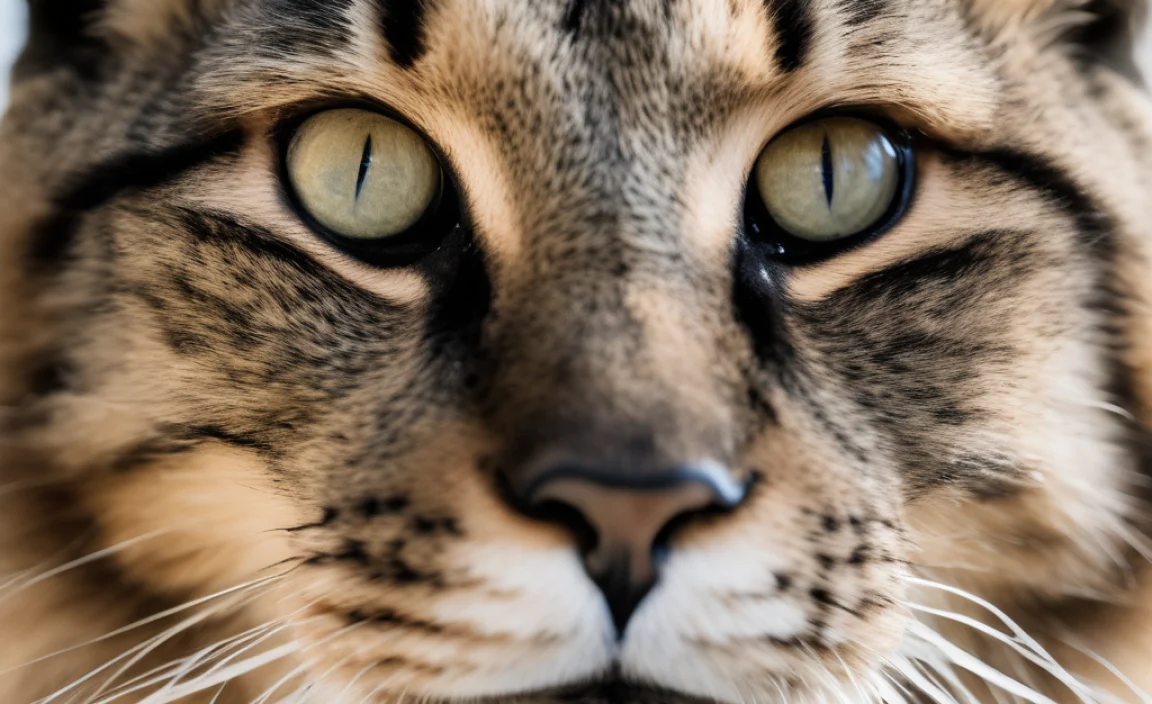
Several other cat breeds are considered vulnerable, meaning they are at risk of becoming endangered if conservation efforts are not maintained. These breeds often have small populations or face specific threats to their survival.
Van Cat
The Van Cat is a breed that originated in the Lake Van region of Turkey. It is known for its striking white coat and love of water.
History and Characteristics
Van Cats have been present in the Lake Van region for centuries. They are large, muscular cats with a distinctive white coat and colored markings on their head and tail. Van Cats are also known for their heterochromia, where each eye is a different color.
Threats and Conservation
The Van Cat population has declined due to habitat loss, crossbreeding, and lack of conservation efforts. The Turkish government has established breeding programs to protect the breed, but more international recognition and support are needed.
Egyptian Mau
The Egyptian Mau is a breed that is believed to have originated in Egypt. It is known for its naturally spotted coat and graceful appearance.
History and Characteristics
The Egyptian Mau is one of the oldest domesticated cat breeds. It has a naturally spotted coat, which is a result of its unique genetic makeup. Egyptian Maus are active, intelligent cats that are devoted to their owners.
Threats and Conservation
The Egyptian Mau population declined significantly in the mid-20th century. Thanks to dedicated breeders, the breed has made a comeback, but its small gene pool still makes it vulnerable. Responsible breeding practices and conservation efforts are essential to ensure its survival.
Chartreux
The Chartreux is a rare French breed known for its blue-grey coat and copper-colored eyes.
History and Characteristics
The Chartreux has a long history, possibly dating back to the 16th century. These cats are known for their dense, water-repellent coat and their calm, gentle temperament. They are often referred to as “smiling cats” due to the unique structure of their head.
Threats and Conservation
The Chartreux breed nearly disappeared after World War II. Dedicated breeders worked to revive the breed, but its numbers remain relatively small. Maintaining genetic diversity and promoting responsible breeding are crucial for the Chartreux’s long-term survival.
What Can Be Done to Help?
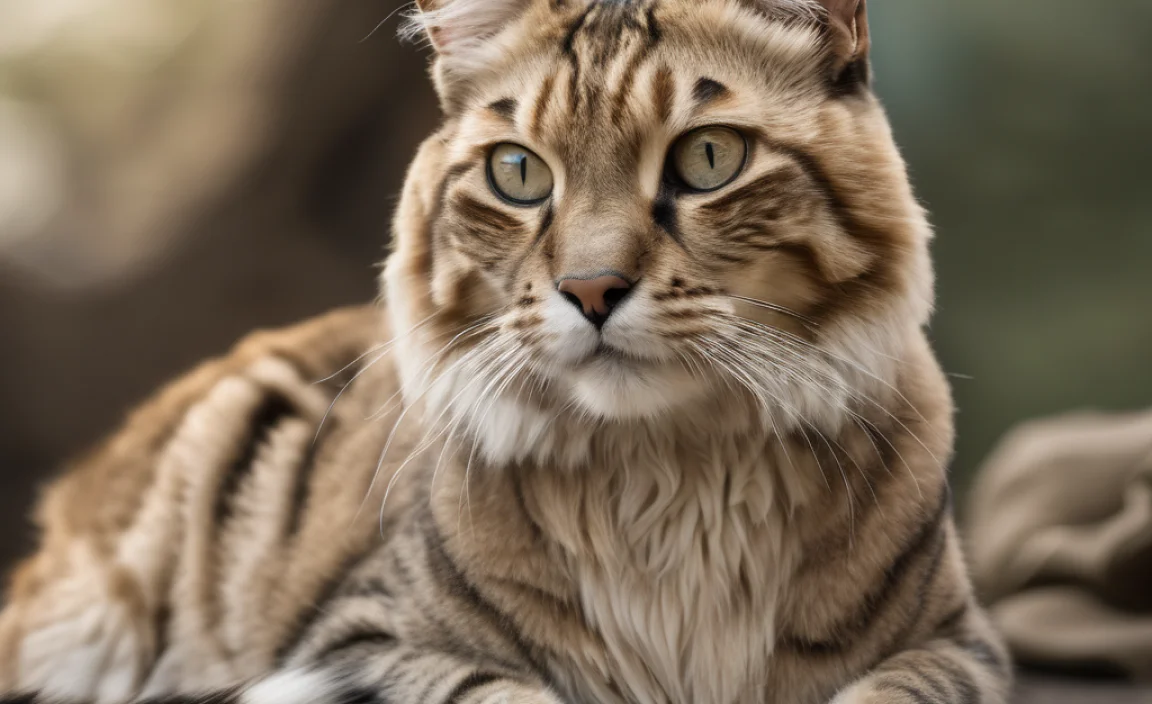
Preserving endangered cat breeds requires a multifaceted approach involving conservation efforts, responsible breeding practices, and public awareness. Here are some ways you can contribute to the cause:
- Support Conservation Organizations: Donate to or volunteer with organizations dedicated to preserving endangered cat breeds.
- Promote Responsible Breeding: Encourage breeders to prioritize genetic diversity and health in their breeding programs.
- Raise Awareness: Educate others about the plight of endangered cat breeds and the importance of conservation.
- Adopt, Don’t Shop: Consider adopting a cat from a shelter or rescue organization. This helps reduce the demand for purebred cats and supports animal welfare.
- Participate in Citizen Science: Contribute to research efforts by reporting sightings of wild cat species or participating in genetic studies.
The Role of Genetic Diversity
Genetic diversity is the foundation of a healthy and resilient population. When a population has a wide range of genetic traits, it is better able to adapt to changing environmental conditions and resist diseases. In contrast, a population with low genetic diversity is more vulnerable to extinction.
Maintaining Genetic Diversity in Breeding Programs
Breeders play a crucial role in maintaining genetic diversity within domestic cat breeds. Responsible breeders carefully select breeding pairs to avoid inbreeding and promote genetic diversity. They also work to preserve rare bloodlines and introduce new genetic material into the population.
The Importance of Outcrossing
Outcrossing, or introducing unrelated individuals into a breeding program, can help increase genetic diversity and improve the health of the population. However, outcrossing must be done carefully to avoid introducing undesirable traits or compromising the breed’s unique characteristics. Genetic testing can help breeders make informed decisions about outcrossing.
The Impact of Climate Change
Climate change poses a significant threat to many cat species, both wild and domestic. As temperatures rise and habitats change, cats may struggle to find food, water, and shelter. Climate change can also increase the risk of disease outbreaks and natural disasters, which can decimate cat populations.
Adaptation Strategies
To mitigate the impact of climate change, conservation efforts must focus on helping cat populations adapt to changing conditions. This may involve restoring habitats, creating corridors to allow cats to move between fragmented habitats, and managing water resources. Additionally, breeders can select for traits that make cats more resilient to heat, drought, and other climate-related stressors.
Case Studies in Conservation
Several successful conservation programs have demonstrated the effectiveness of targeted interventions in preserving endangered cat breeds. These case studies offer valuable insights and lessons for future conservation efforts.
The Iberian Lynx Recovery Program
The Iberian Lynx recovery program is one of the most successful wildlife conservation stories in recent history. Through a combination of habitat restoration, rabbit population management, and captive breeding, the Iberian Lynx population has increased from fewer than 100 individuals to over 800. This program serves as a model for other endangered cat species.
The California Condor Recovery Program
While not a cat, the California Condor Recovery Program offers valuable lessons in captive breeding and reintroduction. The California Condor population dwindled to just 22 individuals in the 1980s. Through intensive captive breeding and reintroduction efforts, the population has rebounded to over 500 individuals. This program demonstrates the potential for captive breeding to save species from the brink of extinction. You can find more details on the U.S. Fish and Wildlife Service website.
The Future of Endangered Cat Breeds
The future of endangered cat breeds depends on our collective efforts to protect their habitats, maintain genetic diversity, and raise awareness about their plight. By supporting conservation organizations, promoting responsible breeding practices, and making informed choices as consumers, we can help ensure that these unique and fascinating cats continue to thrive for generations to come.
| Breed | Status | Threats | Conservation Efforts |
|---|---|---|---|
| Scottish Wildcat | Critically Endangered | Habitat loss, hybridization | Habitat restoration, sterilization programs, captive breeding |
| Iberian Lynx | Endangered | Rabbit population decline, habitat loss | Habitat restoration, rabbit population management, captive breeding |
| Sokoke | Vulnerable | Small population size, limited gene pool | Responsible breeding practices, genetic diversity management |
| Van Cat | Vulnerable | Habitat loss, crossbreeding | Breeding programs, international recognition |
| Egyptian Mau | Vulnerable | Small gene pool | Responsible breeding practices, conservation efforts |
| Chartreux | Vulnerable | Small population size | Responsible breeding, genetic diversity maintenance |
FAQ: History of Endangered Cat Breeds
1. What does it mean for a cat breed to be endangered?
When a cat breed is endangered, it means its population is so small that it’s at a high risk of extinction. Factors like habitat loss, disease, and low genetic diversity contribute to this risk.
2. What are the main causes of endangerment for cat breeds?
The primary causes include habitat loss, genetic bottlenecks (reduced genetic diversity), hybridization with other breeds, and low overall population numbers.
3. How does habitat loss affect cat breeds?
Habitat loss reduces the space where cats can live, hunt, and breed. This leads to smaller, more isolated populations, making them more vulnerable to extinction.
4. What is a genetic bottleneck, and why is it harmful?
A genetic bottleneck is a sharp reduction in a population’s size, leading to a loss of genetic diversity. This makes the breed more susceptible to diseases and less able to adapt to changing environments.
5. How can I help protect endangered cat breeds?
You can support conservation organizations, promote responsible breeding practices, raise awareness about endangered breeds, and consider adopting from shelters to reduce the demand for purebred cats.
6. What is the role of breeders in preserving endangered cat breeds?
Breeders play a vital role by prioritizing genetic diversity and health in their breeding programs, avoiding inbreeding, and preserving rare bloodlines to maintain the breed’s unique characteristics.
7. Are domestic cat breeds ever endangered?
Yes, some domestic cat breeds, like the Sokoke and Egyptian Mau, are considered vulnerable due to small population sizes and limited genetic diversity, making them at risk of endangerment if conservation efforts are not maintained.
Conclusion
The history of endangered cat breeds is a compelling reminder of the delicate balance between nature and human activity. As we’ve explored, factors like habitat loss, genetic bottlenecks, and climate change pose significant threats to these unique creatures. However, it’s not all doom and gloom. Through dedicated conservation efforts, responsible breeding, and increased public awareness, we can make a real difference. Each action, no matter how small, contributes to safeguarding these beautiful animals for future generations. So, let’s continue to learn, support, and advocate for the preservation of these precious feline legacies. As a British Shorthair lover, I believe every cat, rare or common, deserves our care and protection.


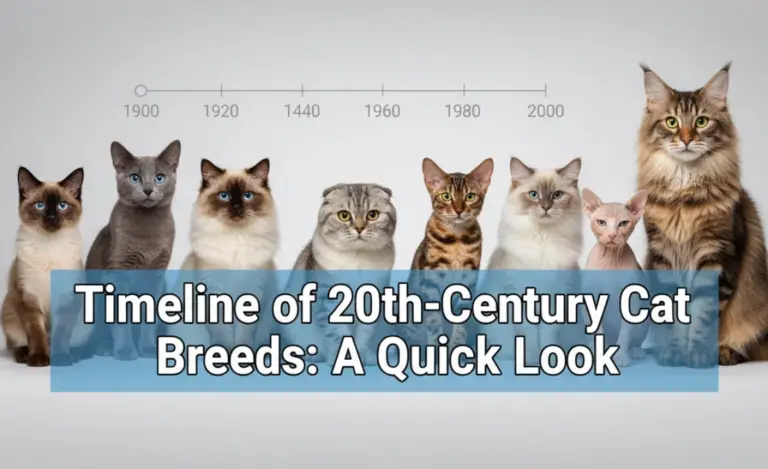
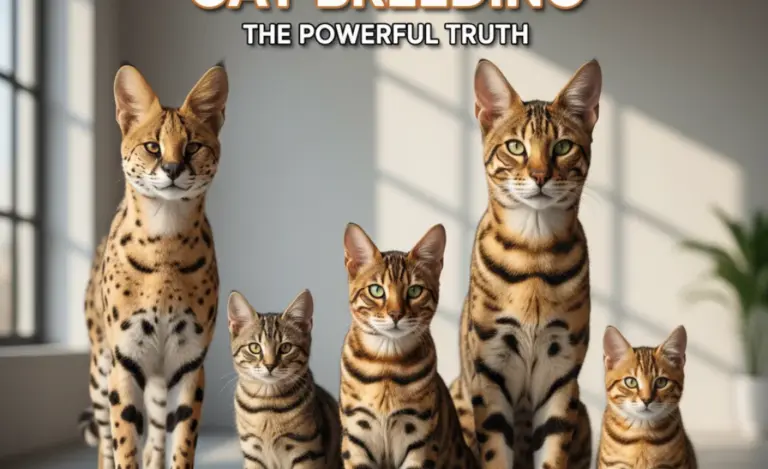
![Timeline of Norwegian Forest Cat: [Ultimate] Guide](https://britishshorthairask.com/wp-content/uploads/2025/11/timeline-of-norwegian-forest-cat-ultimate-guide-768x469.webp)